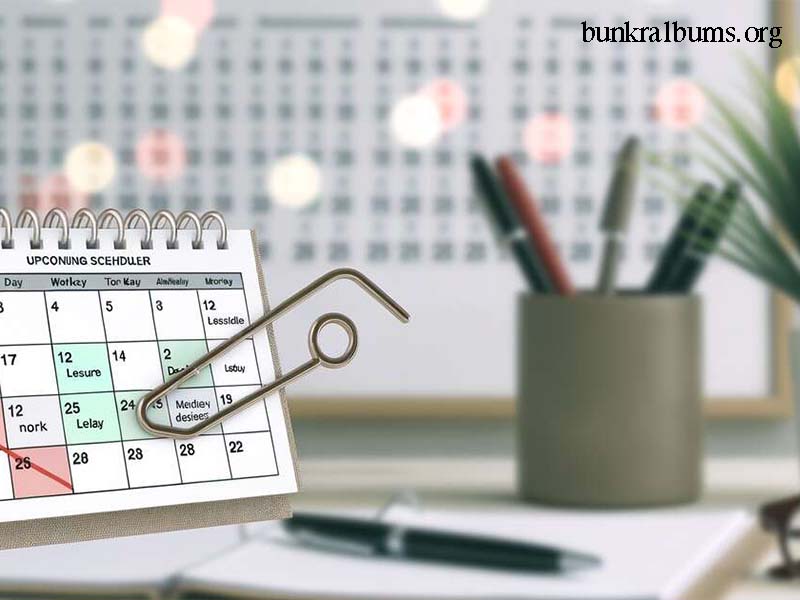Understanding how time is measured and utilized in different contexts can significantly enhance your ability to manage it effectively. One common question is, “How many minutes are in a year?” While this may seem like a simple math question, the implications of understanding time in minutes extend beyond basic arithmetic. This comprehensive guide will not only provide the exact number of minutes in a year but also explore various aspects of time measurement, how it relates to productivity, and why it is essential in modern life.
By the end of this article, you will know how many minutes are in a year and gain valuable insights into time management, time-related trivia, and how businesses and individuals utilize the concept of time for success.
How to Calculate the Number of Minutes in a Year
The basic approach to answering the question is to calculate the total number of minutes based on the number of days in a year, the number of hours in a day, and the number of minutes in an hour. Let’s break it down:
- There are 60 minutes in an hour.
- There are 24 hours in a day.
- There are 365 days in a common year.
Now, to calculate the total number of minutes in a common year, we multiply these numbers together:
- 60 minutes/hour x 24 hours/day x 365 days/year = 525,600 minutes per year
This means that there are 525,600 minutes in a common year. However, this calculation only applies to non-leap years, which occur three out of every four years. In a leap year, there is one extra day, so the calculation changes slightly.
How Many Minutes Are in a Leap Year?
A leap year contains 366 days instead of the standard 365 days. This occurs every four years to compensate for the fact that the Earth’s orbit around the Sun actually takes slightly longer than 365 days—approximately 365.25 days. To adjust for this, an extra day (February 29) is added during leap years.
To calculate the number of minutes in a leap year:
- There are 60 minutes in an hour.
- There are 24 hours in a day.
- There are 366 days in a leap year.
Thus, the total number of minutes in a leap year is:
- 60 minutes/hour x 24 hours/day x 366 days/year = 527,040 minutes per leap year
Therefore, in a leap year, there are 527,040 minutes. This extra day adds an additional 1,440 minutes to the total, compared to a non-leap year.
The Significance of Time Measurement in Daily Life
Now that we know how many minutes are in a year and a leap year, let’s explore why this information matters in various aspects of life, from time management to productivity.
Time and Productivity
When it comes to managing time effectively, understanding how minutes add up over the course of a year can help individuals and businesses optimize their schedules. If you break down a year into minutes, you can see how precious each minute becomes. For instance, if you spend just 10 minutes a day on a particular task, over the course of a year, that adds up to:
- 10 minutes/day x 365 days = 3,650 minutes per year
That’s over 60 hours a year spent on a single daily activity. By tracking how you spend your time, you can identify opportunities to be more efficient and productive. Knowing there are 525,600 minutes in a year reminds us how easily time can slip by unnoticed.
The Importance of Time in Business
In the business world, time is quite literally money. Companies are always looking for ways to save time in order to increase productivity and profitability. Every minute counts when you’re managing a workforce, customer service operations, or sales targets. Successful businesses meticulously track time usage to ensure they are optimizing every minute of their day.
For example, many businesses break down employee productivity based on the number of minutes spent on each task. Understanding how time converts into billable hours or project deadlines is critical for effective management.
Time in Financial Planning
Time is also a key factor in financial planning. Investors are often advised to consider “time in the market” rather than “timing the market” because the length of time investments are held can significantly impact returns. Whether you’re thinking about the number of minutes in a year or the number of years in a lifetime, compounding interest and the value of long-term investments are both dependent on the passage of time.
Knowing how many minutes are in a year can help individuals understand how their actions (or inactions) over the course of those minutes impact their financial futures.
Time Trivia
How Many Minutes in Other Time Periods?
Understanding how many minutes are in a year opens the door to a broader exploration of how time is calculated over various periods. Let’s explore how many minutes are in different time spans:
How Many Minutes in a Month?
The number of minutes in a month varies because months have different numbers of days. Here are some examples:
- January (31 days): 60 minutes/hour x 24 hours/day x 31 days = 44,640 minutes
- February (28 days in a common year): 60 minutes/hour x 24 hours/day x 28 days = 40,320 minutes
- February (29 days in a leap year): 60 minutes/hour x 24 hours/day x 29 days = 41,760 minutes
- April (30 days): 60 minutes/hour x 24 hours/day x 30 days = 43,200 minutes
The average number of minutes in a month (based on a common year) is approximately 43,800 minutes.
How Many Minutes in a Day?
As mentioned earlier, there are 1,440 minutes in a day. This number is calculated by multiplying the 24 hours in a day by the 60 minutes in an hour:
- 60 minutes/hour x 24 hours/day = 1,440 minutes/day
This constant number is essential for calculating time across other periods.
How Many Minutes in a Week?
To calculate the number of minutes in a week, we use the fact that there are 7 days in a week:
- 60 minutes/hour x 24 hours/day x 7 days/week = 10,080 minutes per week
Therefore, each week contains 10,080 minutes. This number can be helpful when planning projects or scheduling weekly activities.
How Many Minutes in a Decade?
If we expand our view to longer time frames, the concept of minutes becomes even more fascinating. A decade consists of 10 years, so to find out how many minutes are in a decade, we multiply the number of minutes in a year by 10:
- 60 minutes/hour x 24 hours/day x 365 days/year x 10 years = 5,256,000 minutes per decade (common years)
For decades that include leap years, the number of minutes will be slightly higher, accounting for the extra days in those leap years.
Time Management Tips
Maximizing Your 525,600 Minutes
We all have the same 525,600 minutes in a common year, but how we use those minutes can make all the difference between success and failure. Here are some practical tips for maximizing your time:
- Set Priorities – Focus on high-impact activities that bring the most value to your life or business.
- Time Blocking – Allocate specific blocks of time for different tasks to ensure you’re staying on track and avoiding distractions.
- Avoid Multitasking – Focus on one task at a time to improve efficiency and reduce errors.
- Take Breaks – Breaks can improve productivity and prevent burnout, making the remaining minutes of your day more effective.
- Track Your Time – Use tools or apps to monitor how you’re spending your time and make adjustments as needed.
Conclusion
The Value of Every Minute
The number of minutes in a year—525,600 for a common year and 527,040 for a leap year—may seem like a large figure, but time is a finite and valuable resource. How we manage those minutes can shape our personal lives, careers, and businesses. Whether you’re a busy professional, a student, or someone looking to improve their time management skills, understanding the importance of every minute can lead to more intentional living and greater success.







